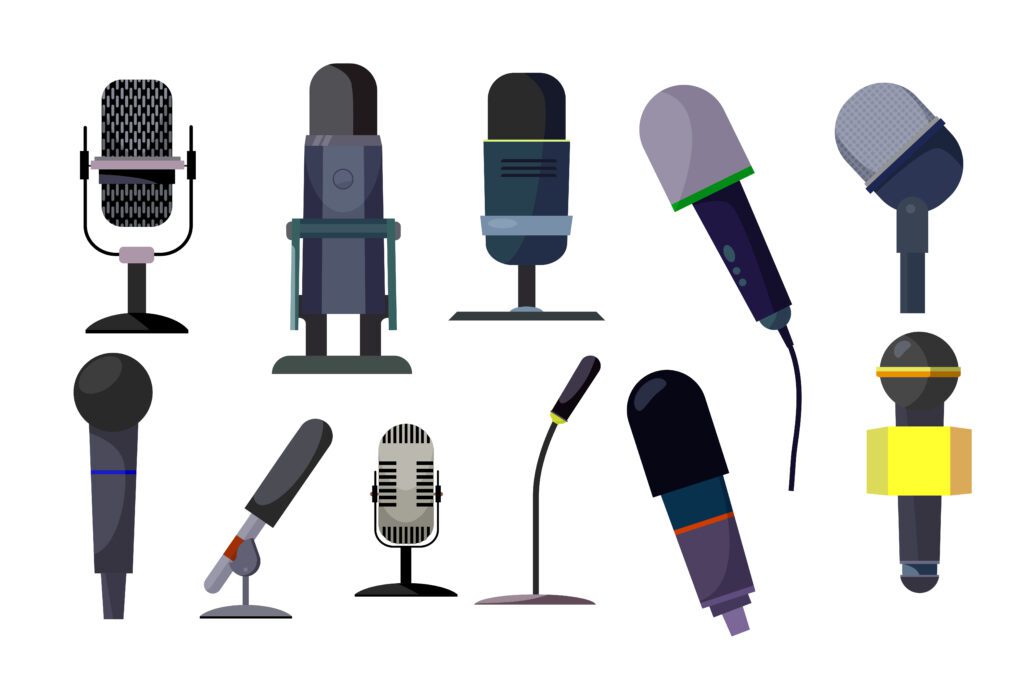Wireless Microphone Pros and Cons

Table of Contents
Introduction
Wireless Microphone Pros and Cons Wireless microphones have become increasingly popular in various industries, from entertainment to business and education. These innovative devices offer greater mobility and flexibility compared to their wired counterparts, allowing performers, presenters, and speakers to move freely without being tethered by cables. In this article, we will explore the pros and cons of using wireless microphones, shedding light on their advantages and potential drawbacks.
What are Wireless Microphones?
Wireless microphones are electronic devices that allow audio signals to be transmitted without the need for physical cables. These microphones consist of a transmitter that captures the sound and converts it into a radio signal, which is then received by a matching receiver connected to the sound system. The absence of cables grants users the freedom to move around during performances or presentations.
Wireless Microphone Pros and Cons
The Advantages of Wireless Microphones
2.1 Greater Mobility
One of the most significant benefits of wireless microphones is the enhanced mobility they provide. Performers on stage can move freely, engaging with the audience and delivering a more captivating performance without being confined to a fixed position. This freedom of movement can significantly elevate the quality of a live show, whether it’s a concert, theater production, or dance performance.
2.2 Flexibility on Stage
Wireless microphones offer unparalleled flexibility on stage, allowing multiple performers to share the same microphone system seamlessly. This feature is particularly advantageous in group performances, panel discussions, and events where several speakers take turns.
2.3 Enhanced Audience Interaction
With the ability to roam around, speakers and performers can interact more effectively with the audience. This increased engagement can lead to a more memorable experience for attendees and a stronger connection between the presenter and the listeners.
2.4 Convenience and Ease of Use
Wireless microphones eliminate the hassle of dealing with tangled cables, making setup and teardown quicker and more straightforward. They are also user-friendly, requiring minimal technical knowledge to operate efficiently.
2.5 Professional Appearance
In various public speaking engagements and performances, the visual aesthetics matter. Wireless microphones allow presenters and performers to maintain a polished and professional appearance by avoiding the visibility of cables running along their bodies.
Potential Drawbacks of Wireless Microphones
3.1 Limited Battery Life
One of the primary concerns with wireless microphones is their dependence on batteries. The transmitter and receiver require a stable power source, and if the batteries are not adequately maintained or replaced, they can unexpectedly die during a performance, leading to disruptions.
3.2 Signal Interference
Radio frequency signals are used by wireless microphones to convey audio. In crowded environments with numerous electronic devices, signal interference can occur, resulting in unwanted audio dropouts or static noise.
3.3 Cost
Compared to wired microphones, wireless models tend to be more expensive due to the additional technology involved in wireless transmission. This cost factor may be a deterrent for those on a tight budget.
3.4 Audio Quality Concerns
Although technology has advanced significantly, some wireless microphone systems still face challenges in delivering the same level of audio quality as their wired counterparts. Audio dropouts, latency, and signal degradation can impact the overall sound experience.
3.5 Learning Curve
Using wireless microphones effectively may require some training, especially for individuals who are not familiar with operating such devices. Learning how to manage frequencies, handle interference, and maintain battery life can be a learning curve for some users.
Choosing the Right Wireless Microphone
Selecting the appropriate wireless microphone system depends on various factors, including the intended use, environment, budget, and audio requirements. Considerations such as frequency range, transmitter power, receiver features, and antenna options should be evaluated to ensure optimal performance.
Tips for Optimizing Wireless Microphone Performance
To get the best results from a wireless microphone system, consider the following tips:
- Keep transmitters and receivers within an optimal range to maintain a stable signal.
- Use fresh batteries before each performance or event to prevent unexpected interruptions.
- Monitor and manage frequencies to avoid interference from other wireless devices in the vicinity.
- Conduct sound checks and rehearsals to familiarize yourself with the equipment and identify any potential issues.
Common Applications of Wireless Microphones
There are several contexts and sectors where wireless microphones are used, including:
6.1 Live Performances and Concerts
Musicians, singers, and entertainers utilize wireless microphones to deliver captivating performances on stage while engaging with their audience.
6.2 Public Speaking and Presentations
In conferences, seminars, and corporate events, wireless microphones offer speakers the freedom to move around and maintain a strong connection with the audience.
6.3 Broadcasting and Journalism
News reporters and broadcasters rely on wireless microphones to capture clear and reliable audio during live reporting and interviews.
6.4 Educational Settings
In classrooms and lecture halls, educators use wireless microphones to ensure their voices are heard clearly, even in large spaces.
Wireless Microphones in the Digital Age
7.1 Digital vs. Analog Wireless Systems
Modern wireless microphones have transitioned from analog to digital technology, offering improved sound quality, greater signal stability, and enhanced security features.
7.2 Frequency Bands and Licensing
Understanding the available frequency bands and acquiring the necessary licenses are essential to avoid interference and legal issues.
7.3 Security and Encryption
As wireless transmissions are susceptible to eavesdropping, advanced encryption methods are implemented to safeguard sensitive content.
The Future of Wireless Microphone Technology
8.1 Advancements in Connectivity
Future wireless microphone systems may integrate with other communication technologies, enhancing connectivity and compatibility.
8.2 Miniaturization and Wearable Microphones
Advancements in miniaturization will lead to smaller and more discreet wireless microphone designs, ideal for wearable applications.
8.3 Improved Audio Transmission
Ongoing research aims to improve audio quality and reduce latency in wireless microphone systems, closing the gap with wired alternatives.
8.4 Integration with Smart Devices
Wireless microphones may soon integrate seamlessly with smartphones, tablets, and other smart devices, expanding their applications.
Wireless Microphone Maintenance and Care
To ensure the longevity and optimal performance of wireless microphones, regular maintenance and proper care are essential. Follow the manufacturer’s instructions for cleaning, storing, and battery upkeep.
Conclusion
Wireless microphones have revolutionized the way performers, presenters, and speakers engage with their audience, offering greater mobility, flexibility, and convenience. However, potential drawbacks such as limited battery life, signal interference, and audio quality concerns should be carefully considered before investing in a wireless microphone system. As technology continues to advance, we can expect even more exciting innovations in the world of wireless audio.
FAQs
Q1: Are wireless microphones suitable for professional stage performances?
Yes, wireless microphones are widely used in professional stage performances as they provide greater mobility and flexibility to performers.
Q2: Can signal interference impact the audio quality of wireless microphones?
Yes, in environments with multiple electronic devices, signal interference can cause audio dropouts or static noise, affecting the audio quality.
Q3: What is the lifespan of wireless microphone batteries?
The battery life varies depending on the model and usage, but with proper care and regular replacement, batteries can last for several hours.
Q4: Can wireless microphones be used in educational settings?
Yes, wireless microphones are commonly used in educational settings to ensure clear and audible communication between educators and students.
Q5: How can I optimize the performance of my wireless microphone?
Optimize the performance of your wireless microphone by keeping transmitters and receivers within range, using fresh batteries, managing frequencies, and conducting sound checks before events.
